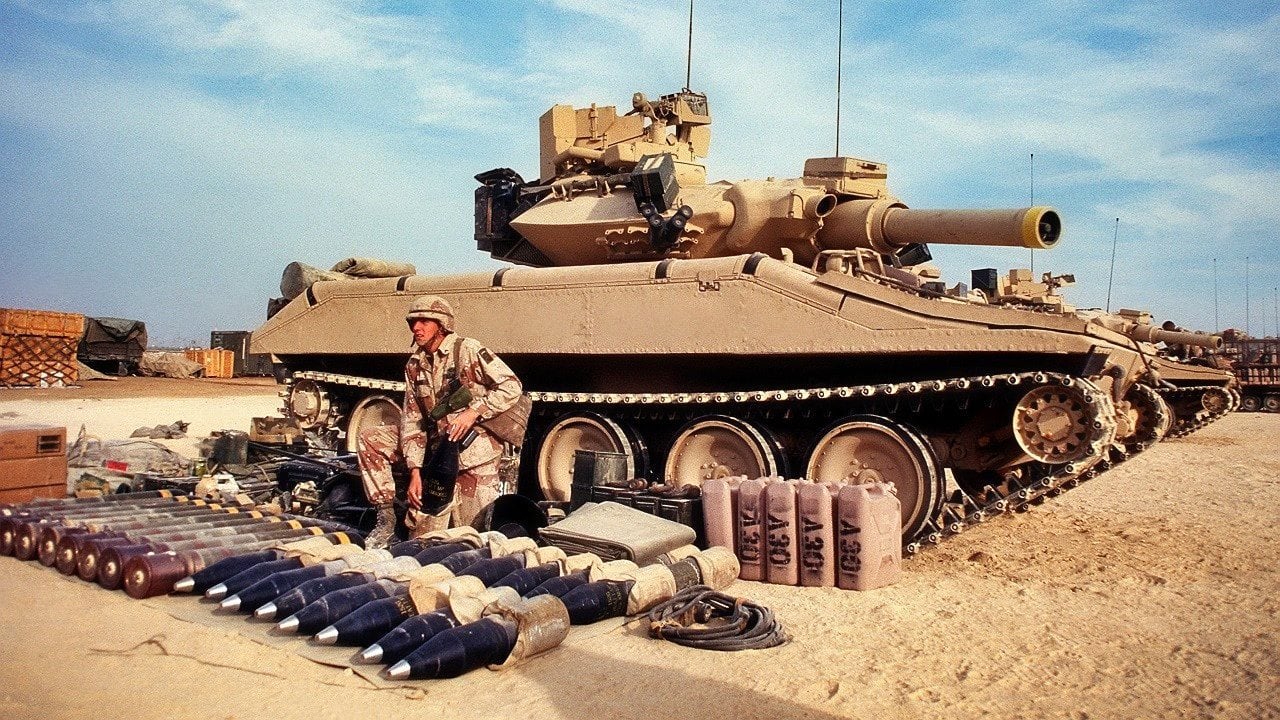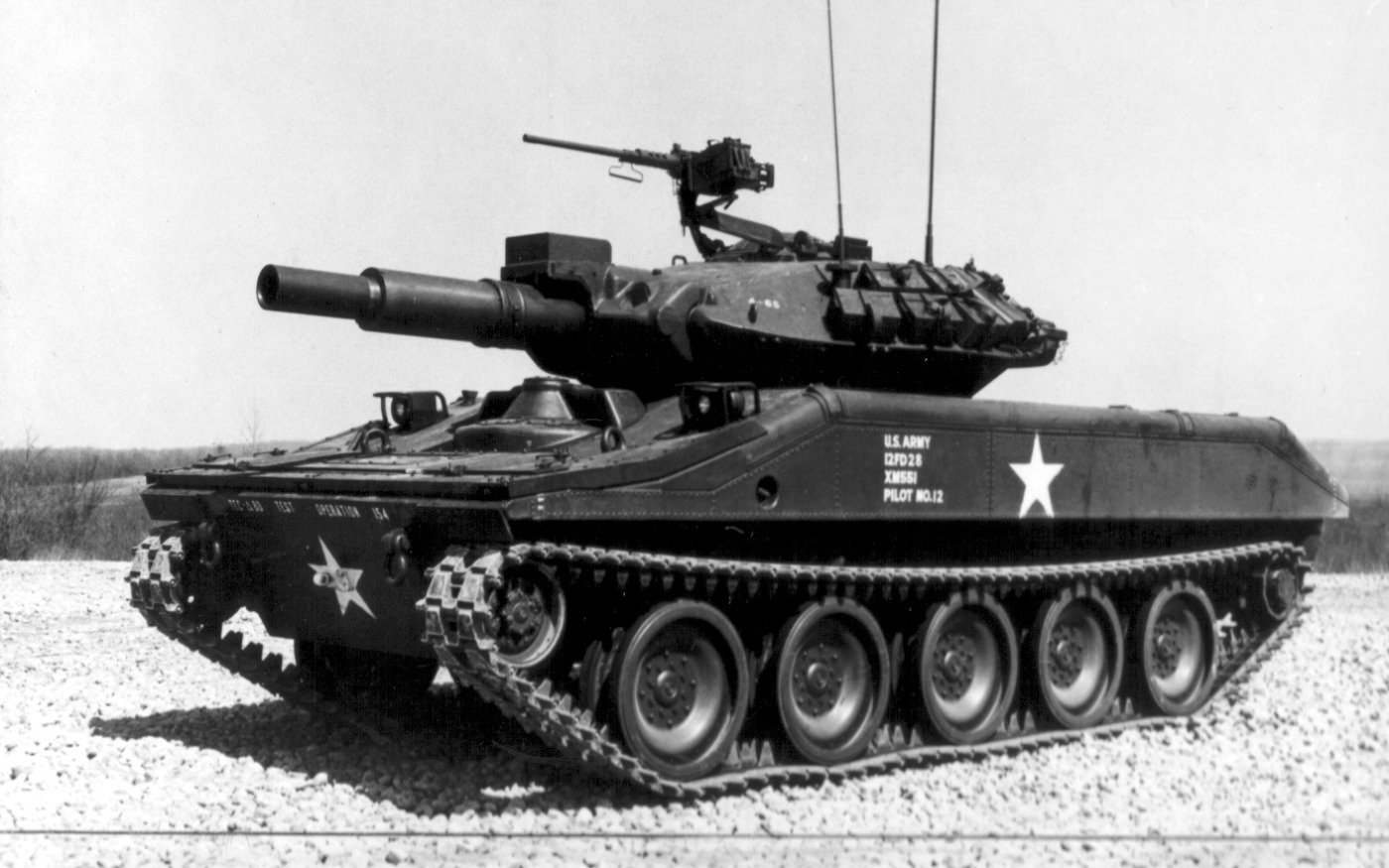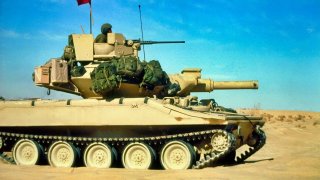M551 Sheridan: The Light Tank The U.S. Army Hated?
The M551 Sheridan Armored Reconnaissance/Airborne Assault Vehicle was the backbone of the U.S. Army's armored corps before the advent of the Abrams main battle tanks.
Summary and Key Points: The M551 Sheridan Armored Reconnaissance/Airborne Assault Vehicle served as the backbone of the U.S. Army's armored corps before the advent of the Abrams main battle tanks.

-It was a lightweight tank that saw action in three major conflicts: the Vietnam War, Operation Just Cause, and the Persian Gulf War.
-Despite its vulnerabilities, the Sheridan provided valuable insights for future armored vehicle development.
M551 Sheridan profile
Before the Abrams family of main battle tanks, another vehicle led the U.S. Army’s armored corps. The M551 “Sheridan” Armored Reconnaissance/Airborne Assault Vehicle served for more than three decades and deployed in three major wars: the Vietnam War, Operation Just Cause, and the Persian Gulf War.
Despite its vulnerabilities, the lightweight tank was a viable asset in combat and provided key insights for future armored vehicles.
An Overview of the Sheridan
After the First World War, the need for mobile armored units was clear. These vehicles were the only military systems able to impact the trench stalemates that defined the Western Front.
By the Second World War, the U.S. Army was heavily invested in developing more advanced and lethal tank fleets. When the M41 Walker Bulldog was introduced around this time, it was expected to remain a centerpiece of the Army’s armored corps. However, weighing 25 tons disqualified the platform as a true light tank. To address this shortcoming, engineers got to work to create a lighter replacement. The T92 program was initially conceptualized, but design issues ultimately led to its cancellation. It wasn’t until the late 1950s that the process leading to the mighty Sheridan tank would begin.
The service was transitioning to the M48 Patton main battle tank during this time period, but the Army was nevertheless intent on procuring an AR/AAV. Eventually, Cadillac won the contract to produce its prototype design, which included a four-man crew and a three-man turret. Their XM551 tank evolved into the Sheridan – the Army had a habit of naming its armored vehicles after famous Civil War generals.
The Pros (and Cons) of the Sheridan
The Sheridan’s main armament consisted of the then-advanced M81E1 152 mm gun launcher, which was able to fire conventional ammunition in addition to the MGM-51 Shillelagh guided anti-tank missile. As detailed by Army History, once clear of the tank, the Shillelagh’s fifteen-pound shaped charge warhead could penetrate any armored vehicle in its path:
“The Army also developed canister and beehive rounds for the M81, which were effective against enemy personnel. The Sheridan could carry up to twenty 152mm cannon rounds. Secondary armament included a 7.62mm machine gun coaxial to the main gun and a .50 caliber machine gun mounted on the turret. The Sheridan was also equipped with four smoke grenade launchers mounted on the turret.”
While this ammunition package was deadly on paper, the first Sheridans in service were equipped with only conventional 152 mm rounds. When the Army finally did receive the correct missiles, it discovered that launching them damaged the gun, specifically cracking around its breech. Even with temporary fixes, the Sheridan could only fire two rounds in one minute. Comparably, the M48 Patton could fire up to seventeen rounds per minute.

Despite these problems, the Sheridan still proved effective in its role as an air-portable/air-droppable light tank. As explained by Colonel Dan Miller, who was a member of the 3-73 Armor, 82nd Airborne Division from 1985-1987, “Sheridans could be air-dropped by one of two different ways. The first was the Low-Velocity Air Drop and consisted of a Sheridan being set onto a pallets and dropped out of any conventional USAF cargo aircraft at around 1,500 feet…The second method became the Low-Altitude Parachute System used in conjunction with a Lockheed C-130 Hercules transport. This method again required the Sheridan to mount a pallets but was only fitted with a single extraction chute.”
The Sheridan’s lightweight qualities ultimately made it an asset in three major roles. Following the tank’s initial deployment for testing, the battle tank saw widespread use in the Vietnam War, followed by the First Gulf War and Operation Just Cause in Panama. However, the Sheridan’s service life was relatively short – the platform was fully retired by 2003.
About the Author: Maya Carlin
Maya Carlin, National Security Writer with The National Interest, is an analyst with the Center for Security Policy and a former Anna Sobol Levy Fellow at IDC Herzliya in Israel. She has by-lines in many publications, including The National Interest, Jerusalem Post, and Times of Israel. You can follow her on Twitter: @MayaCarlin.
Image Credit: Creative Commons and/or Shutterstock.


